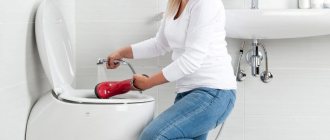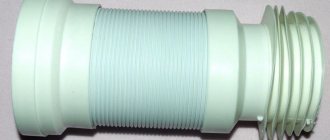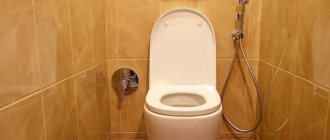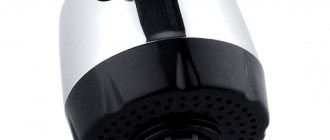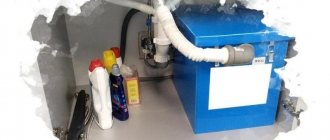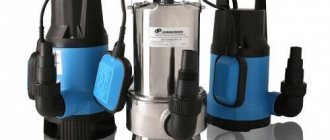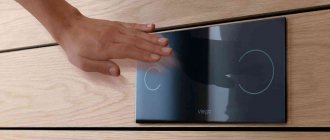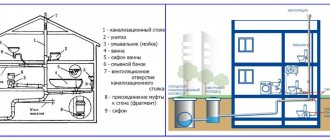Some users have long equipped their bathroom with such a convenient device as a hygienic shower for a toilet with a mixer. Others only recently learned about the existence of such a plumbing fixture. And perhaps they are thinking about purchasing and installing it.
Hygienic shower for toilet with mixer.
If you decide to acquire such a hygienic shower, then it is quite natural to want to learn more about it in order to choose a high-quality, reliable and easy-to-use model. Therefore, this publication will discuss the types and main characteristics of various options for such devices, the procedure for performing installation work, as well as a brief overview of popular models, selected from the general assortment by users who have already tried such showers in operation.
Components of a hygienic shower
This plumbing accessory consists of:
- Watering cans;
- Hose;
- Holder;
- Mixer.
Additional Information! A wall mount is almost always included in the kit, which cannot be said about the mixer.
Materials are used with environmentally friendly properties. This device is resistant to corrosion.
Mainly:
- Brass;
- Stainless steel;
- Chromium.
The shower hose is braided with a metal accordion. Watering can made of plastic.
Materials for making faucets
The material most suitable for the production of faucets is brass.
The top of the product can be chrome-plated or enameled. Such products are quite practical and last a long time. Devices made of chromium are more expensive, but have one undoubted advantage - harmful bacteria do not develop on such a surface. And plastic is mainly used for shower heads and faucet handles. Single lever shower mixer
Types of mixers by installation method
According to the installation method, all faucets for a shower box or cabin can be divided into two groups:
- wall;
- built-in
The installation principle for wall-mounted shower faucets is the same as for similar fixtures for a bathtub or sink. They differ only in the absence of a tap for water outlet. The installation of many of them is not very difficult; sometimes it is enough to watch a video to install them.
Built-in faucets look more attractive in appearance. They are mainly equipped with expensive models of shower cabins. All operating elements are hidden from view, located in the wall behind the cabin panel; only the control system area itself is located outside.
Kinds
It is clear that hygienic shower devices come in different types. We will list them so that in the future it will be easier for you to navigate through all the diversity and choose a shower that meets all your wishes and needs.
- valve is a popular type. Designed for mixing cold and hot flows. The process is entirely controlled manually, one valve is responsible for supplying hot water, and the second is responsible for supplying cold water. The output is water at the desired temperature, which you can control and regulate in your own way.
- lever - mounted in the wall of the toilet, bidet or sink. The lever has 2 main positions, responsible for different functions:
- Vertical – controls the incoming water flow;
- Horizontal – regulates the temperature of the liquid.
The peculiarity of the lever type shower is its comfortable use.
- shower with thermostat. It is an improved and modern model. It works on the principle of setting the required temperature, then you don’t need to do anything, the shower will do all the work for you.
Variety of designs
The hygiene device is available in several designs.
- The first option is a toilet bowl with a built-in nozzle. It is installed in the bowl body itself or on a retractable fitting.
- The second option is a cover model with a built-in hygienic shower or a bidet cover. A very profitable model for a family with frequent moves. There are mechanical types and electric drives.
- The third option is a wall-mounted device with hidden installation. A faucet without spout is purchased. To start the system, liquid is supplied. The hygienic device is mounted on either side of the toilet bowl.
- The fourth option is the most successful method, but not every room can have an additional sink. This option is easily controlled in case of leakage.
Choose a model.
A hygienic shower equipped with a mixer differs in various parameters, but the main one is the type of installation.
This device is installed as follows:
- on the wall using open mounting;
- built-in option, hidden in the wall or behind a false panel;
- A faucet is mounted on the sink, to which a hose is connected.
A shower with a wall-mounted mixer is quite easy to install; it does not require major repairs, unlike built-in models. They put all the “stuffing” into the wall. All that remains outside is a simple faucet and a hose with a watering can.
A built-in version of a hygienic shower would be more than appropriate next to a wall-hung toilet. The “filling” of the device can be placed in the same niche as the cistern. It looks very aesthetically pleasing, but you will have to either build a decorative panel or carve a small niche in the wall. If the mixer for such a shower is placed on the washbasin, then this is more likely to be applicable in a combined bathroom.
Models in which the shower holder is built into the faucet take up less space and are easier to install, but not everyone is comfortable using it. However, if the space of a separate restroom allows, you can install a corner or hanging sink in it, and connect a hygienic shower hose to it. This solution significantly expands the functionality of a hygienic shower. In a separate sink, you can perform various operations that are inconvenient to perform in a kitchen sink or bathtub: wash shoes, a child’s potty, a pet’s litter box, etc.
Perform additional actions: wash the toilet bowl, clean shoes, rinse a dirty container, etc. We should also consider a version of a hygienic shower equipped with a thermostat. On the one hand, this is extremely convenient, since you only need to select the temperature once so that the water is supplied to the watering can exactly as needed.
The hygienic shower head aerator has a special device; it is designed in such a way that water does not splash when using the device. On the other hand, this is a full-fledged electrical appliance that needs to be placed in a room with high humidity. It is important to take all precautions. They are expensive, and when using the thermostat, energy costs will also increase slightly.
To supply water through a hygienic shower, a button or pedal is provided on the watering can. It is recommended to drain the water from the hose after use to protect the valve of this device from overload. The next important point is the price tag. Inexpensive models usually don't last long and don't live up to expectations. However, if the device is installed correctly and used carefully, it can last for several years. Of course, it is better to take a product from a well-known brand. This is especially true if a built-in model is selected.
Dismantling and repairing in the event of a breakdown can be very expensive. Before purchasing, you should inquire not only about the availability of warranties, but also about how to fulfill them. If there is no service center in the city to carry out repairs, warranty documents become practically useless.
Main types of devices
It is important to know the advantages of such a solution to the problem of keeping your body clean, such as installing a wall-hung or floor-mounted toilet with a hygienic shower.
There are usually 5 main arguments:
- simple installation, carried out in several ways;
- saving space in a small room;
- versatility;
- reasonable price;
- Ease of use.
The concept of a hygienic shower includes plumbing equipment that is completely different in appearance. According to design, there are 4 types of these devices for personal hygiene.
Option #1 – shower toilet
This is equipment of a special design, in which nozzles are built into the body. The control unit is built into the drain tank, which slightly increases its dimensions.
Plumbing fixtures of this type are both floor-mounted and wall-mounted. Manufacturers, in the process of improving their products, are constantly adding new ones to the list of available functions.
We recommend that you familiarize yourself with the models of bidet toilet attachments available on the market. This information is discussed in detail in our other article.
The most popular is a wall-hung toilet complemented by a bidet function. It is more convenient and better in terms of aesthetics because... its tank is masked by a plasterboard wall
Option #2 – bidet lid
A bidet lid can be a rather convenient mobile addition to an old toilet. The control unit built into the lid can turn on the function of heating water to a comfortable temperature, drying, and softly lowering the seat.
Although in appearance this special cover resembles a traditional seat, structurally it is very different from it. Installing this element completely transforms the toilet; it acquires all the characteristics of a bidet
An interesting solution is electronic bidet covers for toilets. This is luxury sanitary ware produced by well-known brands. Such devices are more functional and comfortable to use, but their price tag is higher than conventional ones.
Option #3 – wall-mounted structure
The option of a hygienic shower mounted on the wall is quite convenient to use. A long flexible hose with a compact watering can is placed near the toilet. They install it to the water supply pipes, which means additional construction work.
A good alternative to a shower built into the toilet is an addition such as a shower placed nearby on the wall
Option #4 – shower connected under the sink
To implement this option, you need to place a sink next to the toilet. The watering can and flexible hose are attached to a specially designed mixer with three outlets. For a separate bathroom, a miniature corner sink is enough.
When you turn the faucet handle, the stream from the spout flows into the sink. To make water flow from the shower, you need to press the button on the shower head.
The last option for a hygienic shower is the most profitable, based on the cost of the device itself and its installation. Its advantage is that you don’t have to worry about the water being too hot - its temperature can be adjusted to a comfortable level above the sink.
If you absent-mindedly do not close the tap, the water will flow into the sink, which will prevent your neighbors from flooding.
Recommendations for effective use
Some owners of this useful device were somewhat disappointed with the result, since not all their expectations were met. Very often this is due to the fact that the shower was installed incorrectly or the features of this device were not initially taken into account.
The watering can and mixer of a hygienic shower must be placed in the bathroom in such a way that they are convenient for all visitors to use. When the faucet is open, the water flow is controlled only by a small button. With constant pressure, this knot weakens and water begins to leak out.
If the hygienic shower head begins to leak, you need to check the condition of the sealing element; perhaps it is installed incorrectly or requires replacement. To avoid this phenomenon for as long as possible, you just need to turn off the mixer every time. The impact on the valve of the watering can will be short-term, which will significantly increase its service life. If the installation location is chosen incorrectly, using the hygienic shower will be inconvenient. The length of the hose is usually one and a half meters, but there are models in which the size of this element is only 120 cm. This difference can be significant, especially if the previous device is replaced with a new model with different characteristics.
The standard length of the hose is one and a half meters, this is enough to install the watering can at a convenient point next to the toilet. Before installation, you need to think about how to use the device, understand how convenient it will be to open and close the mixer, remove and hang the watering can, etc. Some have found that a wall-mounted model works best attached to a vanity or cabinet cabinet near the toilet.
This hose for a hygienic shower is interesting because, if it is long enough, it sags less than standard models and does not touch the floor. At the end of the procedures, a certain amount of water remains in the hose. It is best to drain it immediately, but not everyone remembers to do this. As a result, the water cools down and does not give the most pleasant sensation the next time you turn it on. It is recommended to drain the water from the hose and check its temperature before use.
Features of installing a hygiene device
If you need a spacious bathroom to install a bidet, then installing a hygienic shower in the toilet takes place without demolishing the walls and increasing the space of the room. It is mounted:
- on the wall of the room;
- into the toilet bowl lid;
- connected to the washbasin.
Any installation method is cheaper than purchasing a bidet and installing it. The hygienic device has several variations in its design, with their pros and cons, and installation features.
The most common problems
1. Crane axle boxes
In the mixer, be sure to choose ceramic ones.
Single-handle faucets have these by default. If the mixer has two flywheels, then there may be valve axle boxes with rubber gaskets. Ceramic crane axle boxes
Important Minus: when the flywheel is twisted, they compress, and after opening, they return to their original shape. But they do it with a delay. Because of this, it can be inconvenient to set the desired water temperature. There is no such problem with ceramics.
2.During installation it is necessary
and it is advisable to install a check valve in the system.
It should be placed on a riser with cold water at a minimum, but better also on a riser with hot water. Check valve
The valve is needed to prevent hot water from flowing into the cold riser.
Since the shower does not have a spout, the difference in pressure in the risers plays a role here. Hot water begins to communicate with cold water. You opened the water supply but did not press the button on the watering can. There is nowhere for the water to go, so it begins to flow from the riser with high pressure to where there is less pressure.As a result, neighbors will have hot water in the toilet cistern, or warm water will run in place of cold water in the tap.
Important Water meters will wind up even if you do not use the gig shower. This is where you can cost a pretty penny.
3. The hose often remains under pressure.
Of course, at first, according to the rules, you will turn off the mixer after using the shower. But in the future, due to the presence of a button, you will stop doing this. Because the pressure in the system is high, this will soon lead to a rupture of the hose and, accordingly, flooding.
Important Always turn off the faucet after use
What to look for when choosing a device
Having carried out a comparative analysis of market products, I would like to say that the facts given below can help you make the right choice, and sometimes even change the decision related to the purchase of a hygienic shower. When choosing a mixer, be guided by the following facts:
- Faucet options with ceramic sealing elements have a long service life.
- The attractive appearance and functionality of the products are maintained even with intensive use over many years.
- Steel holders, handles and other components are more practical and durable than plastic counterparts, which are low in cost.
- Choose a hose that is protected by a durable flexible casing. In this design, it is recommended to purchase products up to 2 meters long, so that the load on the threaded connections is minimal.
- When choosing a plastic hose option, think about whether it will be convenient to use the shower. As practice shows, such products are less flexible than those clad in a steel shell, and are more likely to crack and become damaged. Therefore, the main condition that such a hose must meet is compatibility with hot water supply systems.
- Despite some nuances, plastic is not susceptible to corrosion processes.
Manufacturers of the best showers for bathrooms
There are quite a lot of products for this purpose in stores and it is very difficult to figure out which one is better. Therefore, take a closer look at the products of world-famous companies. There are not so many such manufacturers. Based on user reviews and product popularity, the following are the most popular brands:
Hygienic shower set TM GroheSource kaplya.com.ua
The products of these manufacturers will be of high quality and thoughtful, however, the cost of such mixers will be appropriate. But many experts are sure that saving in such a matter is inappropriate. Purchasing a cheaper and lower quality device, as a rule, leads to its faster breakdown and forced costs for its replacement and payment for related work. Therefore, the quality of the purchased plumbing fixtures should directly depend on the complexity of the installation work being carried out. Replacing a leaky gasket or broken threads can be quite expensive.
In order not to become a victim of deception and not to purchase counterfeit goods, it is recommended to purchase plumbing fixtures in salons with a good reputation and with the obligatory presence of the necessary quality certificates.
Harrows
Harrows are designed to finish what the plow has done, that is, to break up clods of earth. The most popular are two types of harrows:
Dental. This type of harrow is a frame on which pointed spikes of a certain length and thickness are located. When harrowing, they can sometimes pass (not break up) dense large clods, so it may be necessary to go over the strip a second time. However, they are much cheaper than disk ones.
Disk. The attachment consists of a rectangular frame with eight or ten disks attached to it (an equal number on each side). A disc harrow is more expensive than a tooth harrow, but it harrows cleaner and with better quality. There is no need to go through it a second time.
Video description
You can watch this video about whether you need a hygienic shower and what to look for when choosing one:
When choosing a device, you must pay attention to the material of manufacture. The ideal option would be chrome-plated brass or stainless steel with ceramic inside. Bronze products will be more expensive. But silumin ones are cheap, but not reliable. It is best to purchase products with a quality guarantee. Their selection is very large, and prices generally range from 1 to 15 thousand rubles.
SNiP norms 2.08.01-89
Until recently, the Russian Federation mainly used the standards of the Soviet state, which paid great attention to the construction, industrial, epidemiological and occupational safety of its citizens
Recognizing the appropriateness of the data presented in these documents, obtained not just empirically, but also on the basis of scientific research, the norms and rules were still used at the level of recommendations.
The court took them into account when resolving disputes, but could also ignore them. The creation of a state register of regulatory recommendations, norms and rules, as well as methodological guidelines led to the fact that the developed norms and rules in the field of construction, production and the national economy acquired the status of official and legally enshrined. The main condition for acceptance was compliance with the norms of Russian law
The main condition for acceptance was compliance with the norms of Russian law
The creation of a state register of regulatory recommendations, norms and rules, as well as methodological guidelines led to the fact that the developed norms and rules in the field of construction, production and the national economy acquired the status of official and legally enshrined. The main condition for acceptance was compliance with the norms of Russian law.
Sanitary and hygienic standards (SanPiN) are not only not outdated, but have become even more relevant due to the deteriorating epidemiological and environmental situation. None of the adopted sets of rules, according to the laws of the Russian Federation and regulations of the Ministry of Health, should conflict with the standards of sanitation and hygiene.
Ergonomics of the bathroom and toilet rooms
13.03.2009 17:54
(60 ratings, average: 4.17 out of 5)
To My World
Every time a renovation is planned, it is necessary to start with the so-called wet areas - the bathroom, toilet and kitchen. These rooms are the most difficult when planning and calculating ergonomic space.
When reconstructing (repairing) a bathroom, the necessary conditions are taken into account, namely:
- The toilet must be located near the sewer riser; if this is not taken into account, then the toilet is placed above the floor level.
- The sink must be placed at a height of 85-90 cm from the floor level.
- In small bathrooms (less than 15 m2), for safety reasons, it is prohibited to install sockets and switches; they are located in front of the entrance to the room.
- In cases where the bathroom is more than 15 m2, you can install sockets for various equipment: heated towel rails, hair dryers, saunas, TVs and even electric fireplaces.
- Heated towel rails are located next to the riser for connecting to hot water. Electric heated towel rails can be installed at any height from the floor and next to an outlet.
Installation methods
Installation of a hygienic shower can be carried out in two ways - external and built-in.
Outer
The external method includes the above-described connection options to a conventional wall-mounted washbasin or bathtub faucet.
The advantages of this method will be the ability to install a mixer with a thermostat or simply adjust the temperature using the mixer lever above the sink. This is often much more convenient than controls installed above the toilet, on its lid or tank.
Built-in
This method involves hiding all communications and mechanisms behind the wall, bringing out only the platform with the lever. A mount for a watering can is also mounted outside. Sometimes it is already located on a common platform. Each option has a very aesthetic and presentable appearance.
Video description
Installing a hygienic shower in a toilet with polypropylene soldering:
First, you need to turn off the water supply and make pipe routing, preferably with the least number of turns.
If you have a thermostat, you should carefully approach the issue of connecting the water so as not to confuse the cold and hot pipes. The first is usually located on the right, and the second on the left. Then you should install pipes under the mixer, matching the distance with the holes of the mixer and thermostat.
After this, the wall is walled up and plastered, and then a hose with a mixer is connected. The nuts should be tightened as tightly as possible, but without over-tightening.
It is recommended to use anchor bolts to secure the holder to the wall. You should start by drilling holes for the dowel. A hole depth of 6 cm with a diameter of 6 mm will be sufficient. Then you need to insert the dowels and secure the clamp with anchors. The height of the hygienic shower from the floor should be as convenient as possible for its use by the shortest member of the family. This method is simple and reliable.
An example of placing a hygienic shower with size markings Source pinimg.com
After completing the installation, you should configure and check the operation of the hygienic shower. The pressure is turned on and the product is checked for leaks. A comfortable water temperature is checked and adjusted, and then its supply is shut off. It is recommended to turn off the water supply to the faucet after using the shower to reduce the effect of pressure on the control valve.
Briefly about the main thing
A hygienic shower is one of the most convenient ways to carry out post-toilet procedures.
- Small in size. It can be placed even in the smallest closet without harming the free space.
- In addition to its direct purpose, it is often used for other household needs.
- The choice of a hygienic shower model is purely individual and depends on the size, layout and design of the toilet room.
- As with other plumbing equipment, it is recommended to purchase only high-quality certified products.
- It is recommended to entrust the installation of this plumbing fixture to a trained specialist, because... errors during installation can lead to big troubles for you and your neighbors. This is especially true for hidden devices.
Ratings 0
Read later
